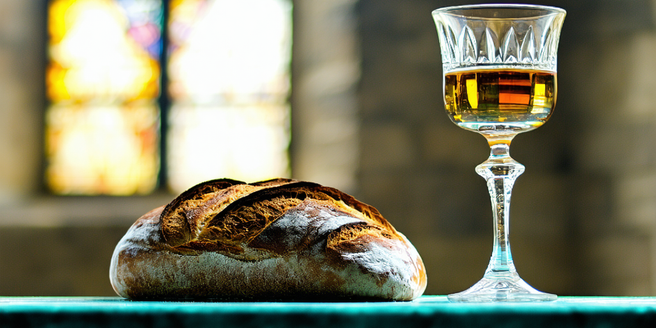Understanding the Roots of Passover and Communion
| Aspect | Passover | Communion |
| Origin | Jewish Tradition | Christian Faith |
| Primary Focus | Exodus Story | Last Supper |
| Symbolism | Freedom | Salvation |
| Practices | Seder Meal | Eucharist |
| Time of Year | Spring | Varies |
| Biblical References | Old Testament | New Testament |
Historical Context: Passover in Ancient Times
In ancient times, Passover was a foundational celebration within the Jewish community, marking their liberation from Egyptian bondage. Its origins date back to the event described in the Book of Exodus, where the Israelites were spared from the devastation of the final plague that struck Egypt. By marking their doorposts with lamb’s blood, they were saved from the angel of death, an act that became synonymous with divine deliverance and salvation. Passover, as detailed in scriptural narratives, was intended to be a lasting ordinance for generations to come, commemorating God’s mighty hand in delivering the Israelites. Over time, it evolved into a complex liturgical event, rich with symbolism and ritual that has been preserved and adapted across centuries, serving as a poignant reminder of faith and freedom.
The Transition from Passover to Communion
The transition from Passover to Communion illustrates the intertwining of Jewish and early Christian practices. Originating from the Jewish tradition of Passover, early Christians adopted and adapted the practice in light of Jesus’s Last Supper with his disciples, which tradition claims took place during this Jewish festival. During this pivotal meal, Jesus is described as linking the symbols of bread and wine to his impending sacrifice, instituting what would later become the Eucharist, or Communion, in Christian tradition. This rite became a cornerstone of Christian worship, commemorating Jesus’s sacrifice and the new covenant described in the New Testament. Over the centuries, while retaining some elements of the Passover meal, the focus shifted more explicitly towards the death and resurrection narrative central to Christian faith.
Symbolism and Rituals: Common Elements
Symbolism plays a crucial role in both Passover and Communion, rooted in rich traditions and meanings. The Passover Seder is filled with significant symbols, such as matzah, bitter herbs, and the shank bone, each representing elements of the Exodus story. Matzah, for example, recalls the haste with which the Israelites fled Egypt, unable to wait for their bread to rise. Similarly, in Communion, the bread and wine are powerful symbols for the body and blood of Christ, encapsulating the essence of his sacrificial act. Both celebrations incorporate elements of remembrance, gratitude, and community, fostering a spirit of reflection and connection to their respective faith’s foundational stories. Despite varied interpretations, these rituals offer adherents a way to engage with profound concepts of deliverance, sacrifice, and redemption.
The Last Supper: Bridging Jewish and Christian Traditions
The Last Supper holds a unique position, bridging Jewish and Christian traditions and serving as the genesis of Communion. Held during Passover, it was a poignant moment where Jesus shared a meal with his disciples, imparting teachings that would resonate through Christian theology. At this supper, Jesus drew upon the Passover narrative, presenting himself as the sacrificial lamb who would deliver humankind from the bondage of sin through his death and resurrection. His act of breaking bread and sharing the cup symbolized the new covenant, a promise of salvation and eternal life. This event, chronicled in the Gospels, established a tradition that would be ritualized in Christian liturgy, echoing the themes of redemption and liberation that are central to both Passover and the Christian experience.
Theological Significance: Shared Beliefs and Differences
The theological significance of Passover and Communion highlights both shared beliefs and distinct differences between Judaism and Christianity. At its core, Passover is deeply embedded in Jewish identity as an enduring testament to God’s deliverance and faithfulness. Communion, while emerging from this Jewish context, reinterprets these themes through the lens of Jesus’s sacrifice as the ultimate salvation for mankind. Both traditions emphasize concepts of sacrifice, redemption, and covenant, yet diverge in focus and ultimate interpretation. Christians view Communion as a commemoration of Jesus’s death and resurrection, a continuous reminder of the divine redeeming love manifest in Christ. Despite differences, the intertwined narratives of Passover and Communion reveal a common spiritual pursuit of understanding divine love, justice, and redemption.
Passover’s Influence on Early Christianity
Passover exerted a strong influence on early Christianity, shaping its liturgy and theological perspectives. As the fledgling Christian community sought to establish its religious identity, it drew heavily from Jewish traditions and scripture, finding continuity and meaning in the Passover motifs of liberation and divine intervention. The synchrony of Passover with Jesus’s crucifixion and resurrection events imbued early Christian celebrations with added depth. Early Church fathers and theologians often referenced Passover to underscore themes of deliverance and divine promise, positioning Jesus as the fulfillment of scriptural prophecies. This connection between Passover and Easter became a focal point of theological reflection, with the timing of the spring holiday mirroring the themes of rebirth and renewal at the heart of the Christian Easter celebration.
Cultural Interpretations Across Different Eras
Cultural interpretations of Passover and Communion have evolved across different eras, reflecting the dynamism of religious practice. In Jewish culture, Passover has remained a perpetually evolving celebration, adapting traditional elements to contemporary contexts, yet holding fast to its core commemorative purpose. Similarly, Communion has seen varying interpretations within Christianity, influenced by denominational beliefs and cultural attitudes. Throughout history, both have found expression in art, music, and literature, each culture putting its unique stamp on the traditions. In times of turmoil or peace, these rituals have provided continuity and a sense of identity, echoing the timeless human quest for meaning and connection. Their endurance through the ages underscores their significance in the shared human experience.
Modern Observances: Continuing the Legacy
Modern observances of Passover and Communion continue to honor and evolve their ancient legacies. For many Jews, Passover remains a vital familial and communal celebration, marked by the Seder dinner, storytelling, and reflection on themes of freedom and renewal. It is a time when families come together to bond and reaffirm their cultural heritage. Meanwhile, Christians worldwide observe Communion through varied liturgical practices, ranging from weekly Eucharist services to special events during Easter. These observances are marked by a sense of reverence and community, offering participants a chance to reflect on their faith and its historical roots. Both traditions serve as living links to the past, celebrating continuity and shared beliefs while also inviting new interpretations and understanding in contemporary society.
Reflections on Faith: Personal and Communal Connections
Reflections on faith through Passover and Communion reveal personal and communal dimensions that resonate deeply with practitioners. Both celebrations offer moments for introspection, allowing individuals to connect personally with the divine narratives they embody. The rituals foster a sense of belonging and community, uniting participants in shared beliefs and histories. Passover, with its storytelling and participation, invites Jews to relive and transmit the Exodus tale, reinforcing a cultural and spiritual identity. Communion unites Christians in a sacred remembrance of sacrifice and redemption, drawing believers closer to the transformative essence of their faith. Through these observances, individuals find renewal and strength, revisiting the foundational tenets of their religion while forging enduring bonds within their communities.










